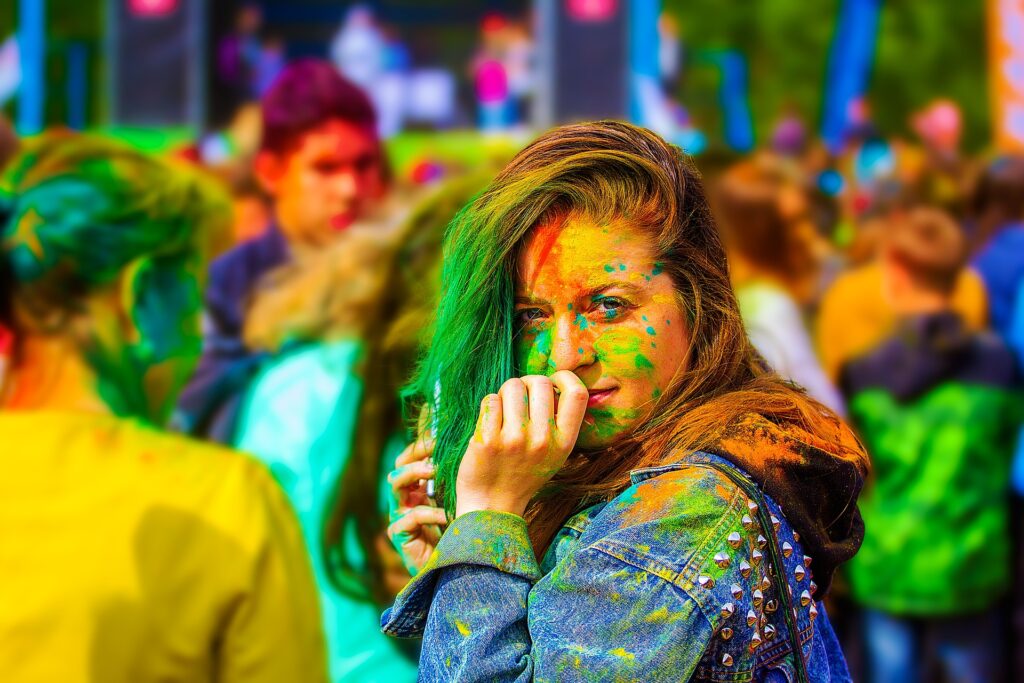
Holi, also known as the “festival of colors”, is one of the most popular and widely celebrated festivals in India. It is a time when people from all walks of life come together to celebrate the arrival of spring, spread love, and indulge in joyous revelry. The festival, which falls in the month of March, is marked by the throwing of colorful powders and water on each other, dancing to traditional music, and indulging in traditional sweets and delicacies. In this essay, we will explore the significance, history, and traditions associated with the Holi festival in India.
Holi holds great cultural and religious significance in India, as it marks the triumph of good over evil, the arrival of spring, and the start of the Hindu New Year. The festival is celebrated over two days, with the first day known as “Holika Dahan” and the second day known as “Rangwali Holi”.
Holika Dahan is celebrated on the night before the main Holi celebrations. It involves the lighting of a bonfire, which symbolizes the victory of good over evil. According to Hindu mythology, the festival celebrates the story of Prahlada, a devotee of Lord Vishnu, who was saved from the fire by the divine grace of the Lord while his evil aunt, Holika, was consumed by the flames.
Rangwali Holi, the main day of the festival, is celebrated by throwing colored powders and water on each other. It is a time to let go of inhibitions, forget old grudges, and forgive those who have wronged us. The throwing of colors is said to represent the victory of love over hate, and the coming together of people from different backgrounds to celebrate the festival of spring.
The origins of Holi can be traced back to ancient Hindu mythology, where it is believed to have originated as a celebration of fertility, love, and the arrival of spring. The festival is also associated with Lord Krishna, one of the most beloved deities in Hinduism, who is said to have celebrated the festival with his friends and lovers by playing pranks, throwing colors, and indulging in traditional sweets and delicacies.
Over the centuries, the festival has evolved and taken on different cultural and regional variations in different parts of India. In some regions, it is celebrated as a time to worship Lord Shiva and seek his blessings, while in others, it is celebrated as a time to honor the love and devotion between Radha and Krishna.
The Holi festival is marked by a number of unique customs and traditions that are observed with great enthusiasm and joy. One of the most popular traditions is the throwing of colored powders and water on each other, which is known as “rang”. People also smear each other with “gulal”, a type of colored powder made from flowers, and “abeer”, a type of colored powder made from crushed leaves.
Another popular tradition is the playing of “dhol”, a traditional Indian drum, and dancing to traditional music. People also visit each other’s homes, exchange sweets and gifts, and participate in community feasts and processions.
In some parts of India, people also celebrate “Lathmar Holi”, a unique tradition where women playfully beat men with sticks, symbolizing the victory of women over men. This tradition is particularly popular in the state of Uttar Pradesh and is said to be inspired by the story of Radha and Krishna.